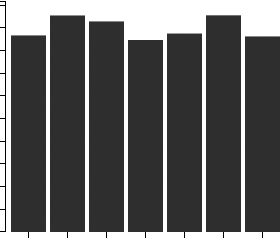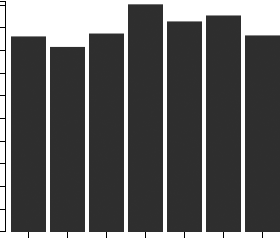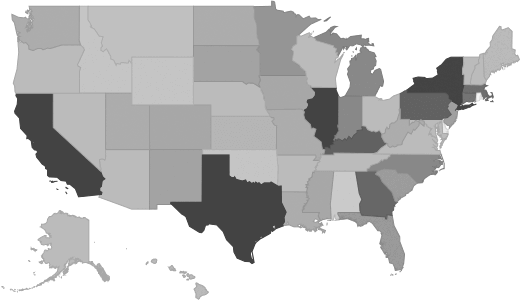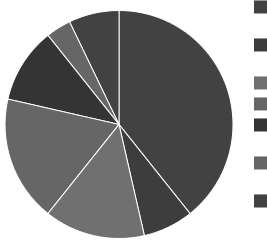Eye Glasses & Contact Lens Stores Industry - Market Research Report
Industry Overview
This industry comprises establishments primarily engaged in one or more of the following: (1) retailing and fitting prescription eyeglasses and contact lenses; (2) retailing prescription eyeglasses in combination with the grinding of lenses to order on the premises; and (3) selling nonprescription eyeglasses.
Source: U.S. Census BureauMarket Size and Industry Forecast
This research report analyzes the market size and trends in the Eye Glasses and Contact Lens Stores industry. It shows overall market size from 2020 to the present, and predicts industry growth through 2030. Revenues data include both public and private companies.
| Historical | Forecasted |
|---|
| 2020 | 2021 | 2022 | 2023 | 2024 | 2025 | 2026 | 2027 | 2028 | 2029 | 2030 |
|---|
| Market Size (Total Revenue) | Included in Report |
| % Growth Rate |
| Number of Companies |
| Total Employees |
| Average Revenue per Company |
| Average Employees per Company |
Source: U.S. government financial dataIndustry Revenue ($ Billions)

Industry Forecast ($ Billions)

Advanced econometric models forecast five years of industry growth based on short- and long-term trend analysis. Market size includes revenue generated from all products and services sold within the industry.
Geographic Breakdown by U.S. State
Market size by state reveals local opportunity through the number of companies located in the region. Each state's growth rate is affected by regional economic conditions. Data by state can be used to pinpoint profitable and nonprofitable locations for Eye Glasses & Contact Lens Stores companies in the United States.
Eye Glasses & Contact Lens Stores Revenue by State

Distribution by Company Size
| Company Size | All Industries | Eye Glasses & Contact Lens Stores |
|---|
| Small Business (< 5 Employees) | Included |
| Small Business (5 - 20) |
| Midsized Business (20 - 100) |
| Large Business (100 - 500) |
| Enterprise (> 500) |
Eye Glasses & Contact Lens Stores Industry Income Statement (Average Financial Metrics)
Financial statement analysis determines averages for the following industry forces:
- Cost of goods sold
- Compensation of officers
- Salaries and wages
- Employee benefit programs
- Rent paid
- Advertising and marketing budgets
The report includes a traditional income statement from an "average" company (both public and private companies are included).
| Industry Average | Percent of Sales |
|---|
| Total Revenue | Included |
| Operating Revenue |
| Cost of Goods Sold (COGS) |
| Gross Profit |
| Operating Expenses |
| Operating Income |
| Non-Operating Income |
| Earnings Before Interest and Taxes (EBIT) |
| Interest Expense |
| Earnings Before Taxes |
| Income Tax |
| Net Profit |
Average Income Statement

Cost of Goods Sold
Salaries, Wages, and Benefits
Rent
Advertising
Depreciation and Amortization
Officer Compensation
Net Income
Financial Ratio Analysis
Financial ratios allow a company's performance to be compared against that of its peers.
| Financial Ratio | Industry Average |
|---|
| Profitability Ratios | Included |
| Profit Margin |
| ROE |
| ROA |
| Liquidity Ratios |
| Current Ratio |
| Quick Ratio |
| Activity Ratios |
| Average Collection Period |
| Asset Turnover Ratio |
| Receivables Turnover Ratio |
| Inventory Conversion Ratio |
Products and Services Mix
Product lines and services in the Eye Glasses & Contact Lens Stores industry accounting for the largest revenue sources.
| Product Description | Description | Revenue
($ Millions) |
|---|
| Industry total | Included |
| Optical goods, including eyeglasses, contact lenses, sunglasses |
| Prescription eyeglasses |
| Nonprescription eyeglasses & sunglasses |
| Contact lenses |
| All nonmerchandise receipts |
| Fees from eye examinations |
| All other optical goods & accessories |
| All other nonmerchandise receipts |
| Drugs, health aids, beauty aids, including cosmetics |
Salary information for employees working in the Eye Glasses & Contact Lens Stores industry.
| Title | Percent of Workforce | Bottom Quartile | Average (Median) Salary | Upper Quartile |
|---|
| Management Occupations | 3% | Included |
| Chief Executives | 0% |
| General and Operations Managers | 2% |
| Healthcare Practitioners and Technical Occupations | 37% |
| Health Diagnosing and Treating Practitioners | 14% |
| Pharmacists | 13% |
| Pharmacists | 13% |
| Health Technologists and Technicians | 23% |
| Health Practitioner Support Technologists and Technicians | 21% |
| Pharmacy Technicians | 20% |
| Sales and Related Occupations | 42% |
| Supervisors of Sales Workers | 6% |
| First-Line Supervisors of Sales Workers | 6% |
| First-Line Supervisors of Retail Sales Workers | 6% |
| Retail Sales Workers | 36% |
| Cashiers | 19% |
| Cashiers | 19% |
| Retail Salespersons | 16% |
| Retail Salespersons | 16% |
| Office and Administrative Support Occupations | 8% |
Government Contracts
The federal government spent an annual total of
$462,128 on the eye glasses & contact lens stores industry. It has awarded 43 contracts to 14 companies, with an average value of $33,009 per company.
Top Companies in Eye Glasses & Contact Lens Stores and Adjacent Industries
| Company | Address | Revenue
($ Millions) |
|---|
Included |



